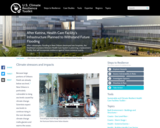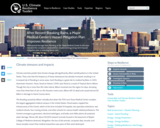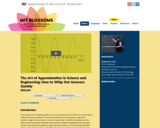
Download this guide to access ideas and challenges for using K'NEX in your makerspace.
- Subject:
- Engineering
- Mathematics
- Science
- Material Type:
- Activity/Lab
- Provider:
- K'NEX User Group
- Date Added:
- 04/30/2024

Download this guide to access ideas and challenges for using K'NEX in your makerspace.

Machine vision. Data wrangling. Reinforcement learning. What do these terms even mean? In AI 101, MIT researcher Brandon Leshchinskiy offers an introduction to artificial intelligence that’s designed specifically for those with little to no background in the subject. The workshop starts with a summary of key concepts in AI, followed by an interactive exercise where participants train their own algorithm. Finally, it closes with a summary of key takeaways and Q/A. All are welcome!

This article describes covert and overt active engagement strategies for use with elementary students. Find the Question templates are included for use with informational text.

Our brains control every movement we make. Most of us take for granted our ability to pick up a cup or change the television station. However, for people who have lost a limb or become paralyzed, the inability to do these things means a loss of freedom and independence. This video segment from Greater Boston describes how neuroscientists and bioengineers have teamed up to create a system that allows people who have lost motor functions to control electronic devices through their thoughts alone. Grades 6-12

After catastrophic flooding in New Orleans destroyed two hospitals, the Southeast Louisiana Veterans Health Care System is planning a replacement facility that will incorporate resilience against future extreme events.

Widespread damage from flooding at the Texas Medical Center in Houston revealed the complex's vulnerabilities. Implementing a long-term hazard mitigation plan is reducing future risks.

Do you need proof that driving is a dangerous activity? More Americans have died in car crashes over the past 100 years than in all the wars the U.S. has ever fought combined. More than 40,000 Americans die each year on the nation's highways, most as the result of high-speed collisions. In this video segment adapted from NOVA, learn how engineers developed the air bag, an important automobile-safety device now found in most cars.
Recommended for: Grades 3-12

In this video segment adapted from ZOOM, cast members make their own hovercraft and demonstrate how the air leaking out of a balloon can make a plastic plate hover above a table.

This informational text explains that while both the Arctic and Antarctica are cold, Antarctica is much colder and drier - a polar desert. The text is written at a grade two through grade three reading level. This is a PDF containing the informational text and a glossary.

This video segment adapted from Building Big illustrates the strength of the arch in bridge design and construction.

This article describes several traditional Inuit games and provides background information and resources for incorporating them into a lesson or unit on Inuit culture.

This issue of the free online magazine, Beyond Penguins and Polar Bears, explores the amazing birds that live in or migrate to the polar regions. The issue was co-produced with the Cornell Lab of Ornithology. In addition to content knowledge articles and lesson plans, the issue includes information about bird-themed citizen science programs from the Cornell Lab of Ornithology.

This informational text introduces students to similarities and differences in the North and South Poles. The text is written at a grade one through two reading level. This is a PDF containing the informational text and a glossary.

The purpose of this learning video is to show students how to think more freely about math and science problems. Sometimes getting an approximate answer in a much shorter period of time is well worth the time saved. This video explores techniques for making quick, back-of-the-envelope approximations that are not only surprisingly accurate, but are also illuminating for building intuition in understanding science. This video touches upon 10th-grade level Algebra I and first-year high school physics, but the concepts covered (velocity, distance, mass, etc) are basic enough that science-oriented younger students would understand. If desired, teachers may bring in pendula of various lengths, weights to hang, and a stopwatch to measure period. Examples of in- class exercises for between the video segments include: asking students to estimate 29 x 31 without a calculator or paper and pencil; and asking students how close they can get to a black hole without getting sucked in.

The aim of this video is to introduce high school students to the engineering concept of road construction and to the reasons why problems might arise in road construction. Presentation of this concept is made more accessible to students by comparing road construction to the art of baking a layer cake. This simple comparison can serve to emphasize how important it is to follow proper procedures and to use proper materials for successful road construction. The approach used is highly correlated with the common knowledge of baking layer cakes in Malaysia. Students should be able to relate the procedure of baking a layer cake to the importance of following the correct methods of road construction. An understanding of basic statistics is necessary before starting this lesson. This lesson will take almost 60 minutes to complete. During activity breaks, students are required to answer questions and complete assigned tasks related to the subject.

Explore some of the wonders of modern engineering in this video from the Sciencenter in Ithaca, New York. Hear a diverse selection of engineers explain how things work.

In this video segment produced for Teachers' Domain, Andres Berrio, an associate scientist at Biogen Idec, discusses what he has done to succeed in the biotechnology field.

This script for choral reading was written to be used with two groups of students. The script is based on the Feature Story, At Home in the Cold and discusses various adaptations that allow animals to survive in the cold oceans of the Arctic and Antarctica. The script is appropriate for use with students in grades K-1.

This informational text explores adaptations that allow penguins, whales, walruses, seals, and fish to live in the cold water of the Arctic and Southern Oceans. The text is at reading level appropriate for students in Kindergarten through first grade. It is a PDF file that contains the text as well as a glossary.

This article includes links to expository text for students in grades K-1, 2-3, and 4-5 about the aurora.